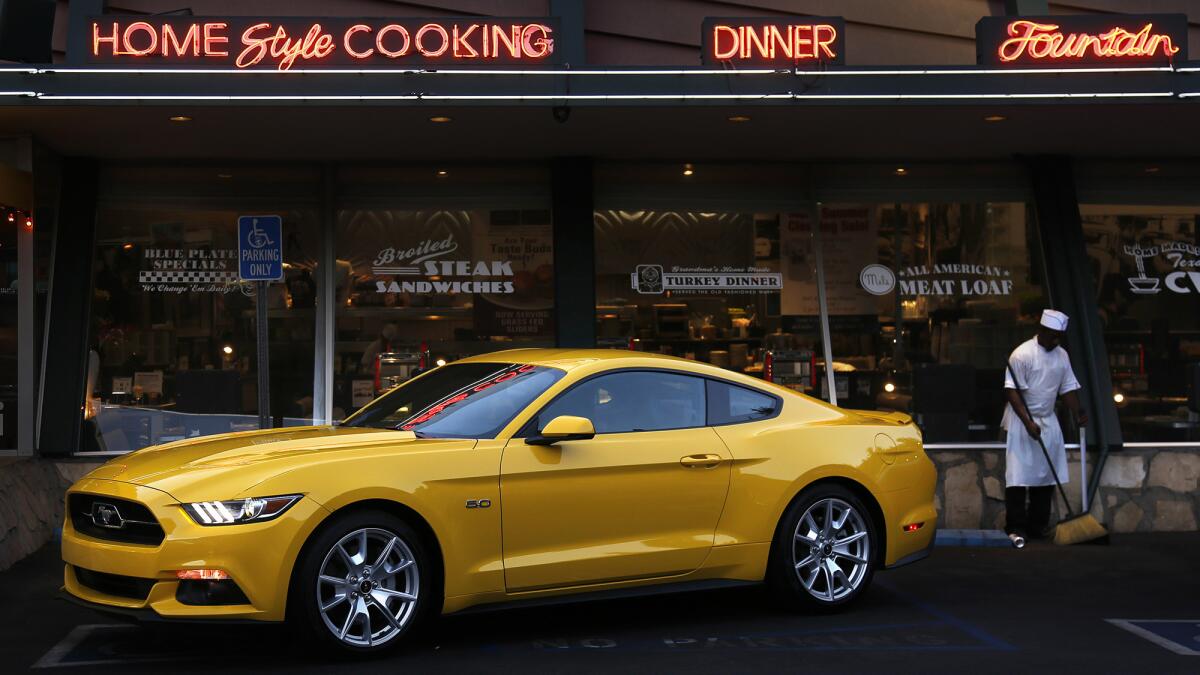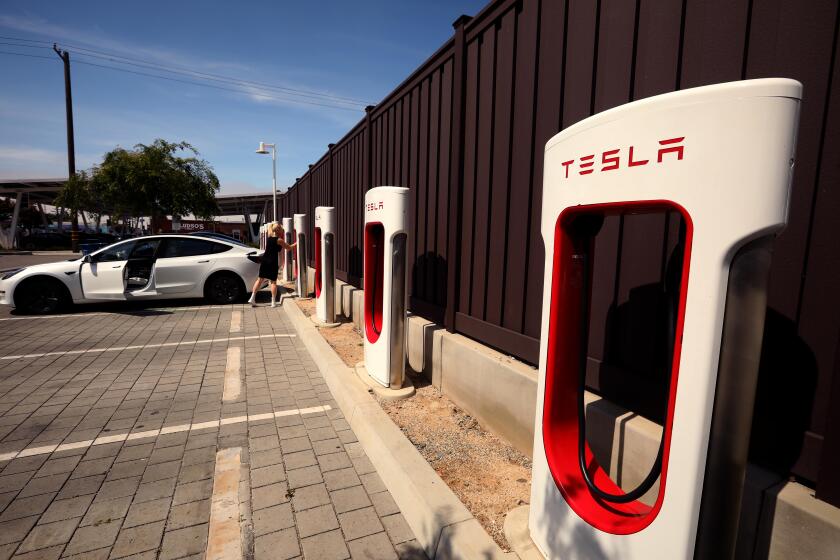New Ford Mustang has old bloodlines

It’s hard to imagine a more delicate automotive redesign than the 50th-anniversary Mustang.
Ford had to balance the weight of all that history with the need to move beyond mere nostalgia and appeal to a younger, more global audience.
And yet, in the minds of many enthusiasts, the whole affair could be reduced to a simple directive: Don’t get cute – stick to the fundamentals.
It appears that Ford got this message, judging by the striking pictures released this week showing a measured evolution of what remains, at its core, a late-1960s design. All the elements are there: the fastback profile; the long hood, fronted by a shark-nosed grill; the tri-bar taillights; rear-wheel drive; the V-8 engine option.
PHOTOS: Ford debuts 2015 Mustang
A deft blend of classic and modern, the new Mustang represents a kind of redemption for hasty redesigns in the 1970s, when Ford prematurely overhauled one of the prettiest and most popular cars ever built.
The original Mustang, released in 1964 as a 1965 model, sold a million copies by the spring of 1966. It then improved with measured updates, most notably the 1967 fastback.
PHOTOS: Mustangs through the years
Ford started to lose its way with 1971 Mustang, a comparatively bland and bloated coupe, stripped of its signature sculpted sides. The fastback looked more like a flatback, extending like a table top to a high and bulky posterior. A foot longer and 600 pounds heavier than the original, these early ‘70s models proved a misguided attempt to turn the pony car some kind of luxury cruiser.
All that girth didn’t help performance, especially after horsepower took a nose dive as the industry faced new fuel economy and pollution standards. The 1973 Mustang, even with a V-8, produced an anemic 150 horsepower.
QUIZ: How much do you know about the Mustang?
Then came the overcorrection: the 1974 Mustang II, a miniature pony built on the same platform as the lowly Pinto. Three words: small, slow and ugly. Not exactly core Mustang values. (But cut Ford some slack. It’s not like GM or Chrysler put out many memorable cars in this dark decade.)
The Mustang would recover by the mid-1980s, when fourth-generation “5.0” V-8 Mustangs created a cultural phenomenon of their own. With little resemblance to the 1960s Mustangs, these cars made their own statement: cheap, fast and fun, with simple, straight lines and squared-off edges.
I predict that the best of these model years – starting with the introduction of a high-output 302 V-8 in 1985, and running through 1993 – will be treated kindly by history. But I’m biased: My personal history crosses paths with the Mustang here.
I’ve owned four of them over the years: an ’83 GT convertible, an ’86 GT hatchback, an ’89 LX 5.0 notchback and a ’91 5.0 LX convertible. With their compact frames and muscular motors, they taught me how to drive – and to love driving. (And, after getting overly familiar with a curb or two, how to keep a live-rear-axle car from swapping ends in hard cornering.)
I can remember jawboning with a stranger at an autocross racing event, watching a 5.0-liter Mustang rip through a course of traffic cones. We took in the baritone chorus from two fat tailpipes.
“They sure did get the music right,” he told me.
The Mustangs that followed, starting with a 1994 redesign, never grabbed me the same way. Then, as with the 2015 model, Ford sought that elusive balance of retro and modern. The car was fine, for its day. Fast enough. Faithful enough to the heritage. But it looked like awkward amalgam, slapped together from pieces and parts rather than sculpted from a solid block of Mustang, like the best of the breed.
For the 2005 model year, Ford simply gave up on trying to outdesign the ‘60s Mustangs – instead releasing a full-on retro model that could have passed, in low light, for a 1967 fastback. Critics and enthusiasts rejoiced. Earlier this year, we reviewed the last of these well-executed throwbacks, the 2013 GT, and found it exhilarating and endearingly crude.
I have long wondered how Ford designers, after resorting to the time machine, would yank the Mustang four decades back into the future. And now we know: They didn’t. This sixth generation picks up right where the first generation, and its modern doppelganger, left off.
This is the car Ford should have built in 1971. And, hey, who among us doesn’t deserve a do-over on the ‘70s.







